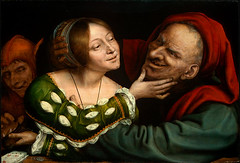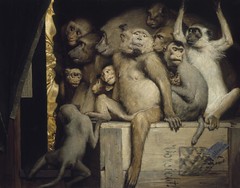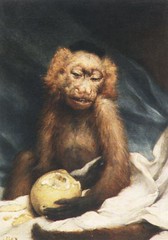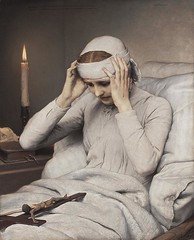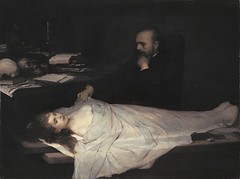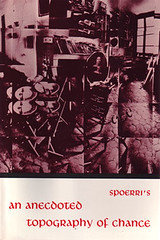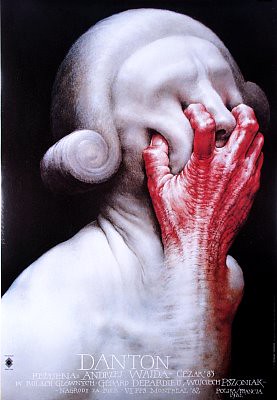
Danton poster made in 1991 by Wiesław Wałkuski, for a 1983 film by Andrzej Wajda
It seems that my current interest in the work of Polish-French artist Roland Topor brings me again to the work of the Polish film poster makers. Their work is fantastic, figuratively and literally. Why is it that graphic design is at such a qualitative height in Poland. And why is it that their work is so unbelievably strange?
The tropes of the Polish film poster school are the fantastique, grotesque, weird, uncanny: pierced and punctured bodies, cut-out figures, dismembered limbs, independent body parts, eerie physicality and visceral transparency.
As to the why, the site owner of Polish film posters has an explanation:
A lot of patronizing drivel had been written about the ‘Polish School’ of poster design being a ‘product’ of a ‘resistance to Communism’ or some such (and by extension, of an overwhelming desire to breathe free under the learned guidance of a Bushmonkey-on-a-cheney). That view, espoused by Western writers who don’t know any better, and Polish ones (who should know better) has been omnipresent lately. No matter that the idea of art as an expression of political circumstance is par excellence a classic communist one.
In fact, quite the opposite seems to be true : free from commercial stranglehold, these artists produced brilliant works over an extended period of time. A lot of talented people found themselves in the right place at the right time. Like any artistic movement (or ‘school’), it had its own dynamics, peaks and valleys. Indeed, some of the most accomplished works were political (pro-socialist). And now the fact that Polish film poster is dead (and had been so since 1989 when the film distribution was privatized) is further evidence of that.–http://www.cinemaposter.com/index.html
As an encore I give you one more poster with the theme of independent body parts:

poster by Lech Majewski 1977 for Le Mouton enrage (1974)
sourced here.
About 500 more movie posters of the same site here.
I’ve reported on the paratextual qualities of the film poster here.



